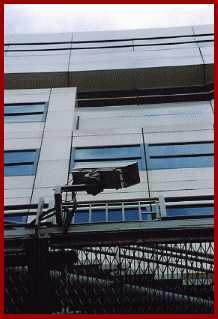| ||||||||||||||||||||||||||||||
Welcome to the | ||||||||||||||||||||||||||||||
 | ||||||||||||||||||||||||||||||
 | ||||||||||||||||||||||||||||||
All you need to know about lenses, | ||||||||||||||||||||||||||||||
It’s perhaps worth mentioning that the Depth of Field of a lens is strictly controlled by basic optical principles tied to the actual Focal Length. If you use the same lens on various other format cameras, whilst the actual angle of coverage will appear different, the Depth of Field will always remain as a constant, relative to the aperture selected. It’s also useful to remember that with Black and White cameras used with Infra Red lighting, there is a known problem in terms of focus shift (a slight correction normally has to be made with the focus ring, to make the Infra Red images acceptably sharp; on some lenses the correct focus point is marked with a red dot, and with a very few usually more expensive IR corrected lenses, the focussed image remains constant whatever frequency of light is involved). Infra Red light because of its shorter wavelength, focusses at a slightly different point to visible light frequencies; however, if lighting levels are adequate and the lens aperture is closed (stopped down) sufficiently, the Depth of Field becomes suitably large enough to maintain definition throughout the day .... and night. In case you haven’t guessed by now, a great deal to do with optics is based on compromise. The smaller cheaper CS mount lenses, will often have a wider maximum aperture, but their overall optical performance may be significantly inferior to the ‘C’ mount equivalents. Automatic Iris lenses are often the preferred option for many installers (higher cost = greater profit) and yet with most indoor applications, under controlled lighting, they are simply not the ideal choice. Looking at 'perspective', this is something we’ve only touched on so far, but it is actually very important, particularly if the images produced by the camera are intended to be analysed using any one of a number of computer based automatic recognition systems (e.g. Facial Recognition - AFRS, Vehicle Plates - ANPR, Predicted Behaviour - APBA). The narrower the lens coverage (i.e. the more Telephoto, or to put it another way, the higher the magnification), the ‘flatter’ the perspective. This phenomenon is particularly noticeable on zoom lenses, and yet there is one other little secret that most people are blissfully unaware of, and this relates specifically to high performance zoom lenses. | ||||||||||||||||||||||||||||||
 | ||||||||||||||||||||||||||||||
IMPORTANT: No material may be reproduced, copied or redistributed from this site, © doktorjon.co.uk 2004 - 2008 Homepage...:...Gateway...:...Technical Gateway....:....Quickfind Index....:....Equipment Directory | ||||||||||||||||||||||||||||||

